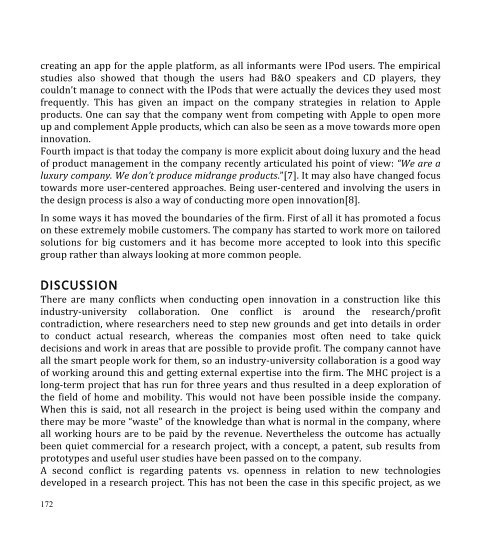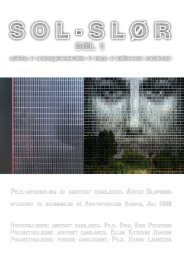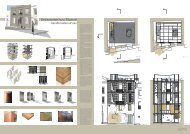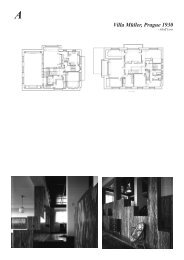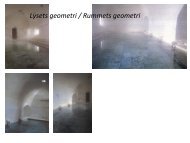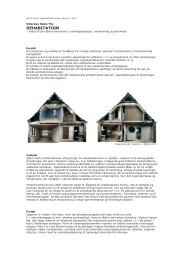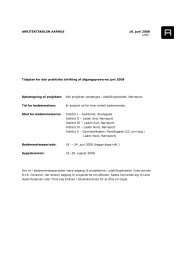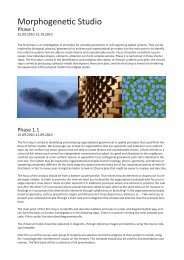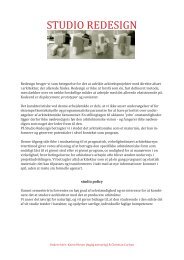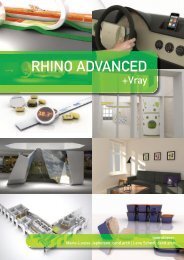-Tactics and Concepts for Highly Mobile People
-Tactics and Concepts for Highly Mobile People
-Tactics and Concepts for Highly Mobile People
Create successful ePaper yourself
Turn your PDF publications into a flip-book with our unique Google optimized e-Paper software.
creating an app <strong>for</strong> the apple plat<strong>for</strong>m, as all in<strong>for</strong>mants were IPod users. The empirical<br />
studies also showed that though the users had B&O speakers <strong>and</strong> CD players, they<br />
couldn’t manage to connect with the IPods that were actually the devices they used most<br />
frequently. This has given an impact on the company strategies in relation to Apple<br />
products. One can say that the company went from competing with Apple to open more<br />
up <strong>and</strong> complement Apple products, which can also be seen as a move towards more open<br />
innovation.<br />
Fourth impact is that today the company is more explicit about doing luxury <strong>and</strong> the head<br />
of product management in the company recently articulated his point of view: “We are a<br />
luxury company. We don’t produce midrange products.”[7]. It may also have changed focus<br />
towards more user-‐centered approaches. Being user-‐centered <strong>and</strong> involving the users in<br />
the design process is also a way of conducting more open innovation[8].<br />
In some ways it has moved the boundaries of the firm. First of all it has promoted a focus<br />
on these extremely mobile customers. The company has started to work more on tailored<br />
solutions <strong>for</strong> big customers <strong>and</strong> it has become more accepted to look into this specific<br />
group rather than always looking at more common people.<br />
DISCUSSION<br />
There are many conflicts when conducting open innovation in a construction like this<br />
industry-‐university collaboration. One conflict is around the research/profit<br />
contradiction, where researchers need to step new grounds <strong>and</strong> get into details in order<br />
to conduct actual research, whereas the companies most often need to take quick<br />
decisions <strong>and</strong> work in areas that are possible to provide profit. The company cannot have<br />
all the smart people work <strong>for</strong> them, so an industry-‐university collaboration is a good way<br />
of working around this <strong>and</strong> getting external expertise into the firm. The MHC project is a<br />
long-‐term project that has run <strong>for</strong> three years <strong>and</strong> thus resulted in a deep exploration of<br />
the field of home <strong>and</strong> mobility. This would not have been possible inside the company.<br />
When this is said, not all research in the project is being used within the company <strong>and</strong><br />
there may be more “waste” of the knowledge than what is normal in the company, where<br />
all working hours are to be paid by the revenue. Nevertheless the outcome has actually<br />
been quiet commercial <strong>for</strong> a research project, with a concept, a patent, sub results from<br />
prototypes <strong>and</strong> useful user studies have been passed on to the company.<br />
A second conflict is regarding patents vs. openness in relation to new technologies<br />
developed in a research project. This has not been the case in this specific project, as we<br />
172


